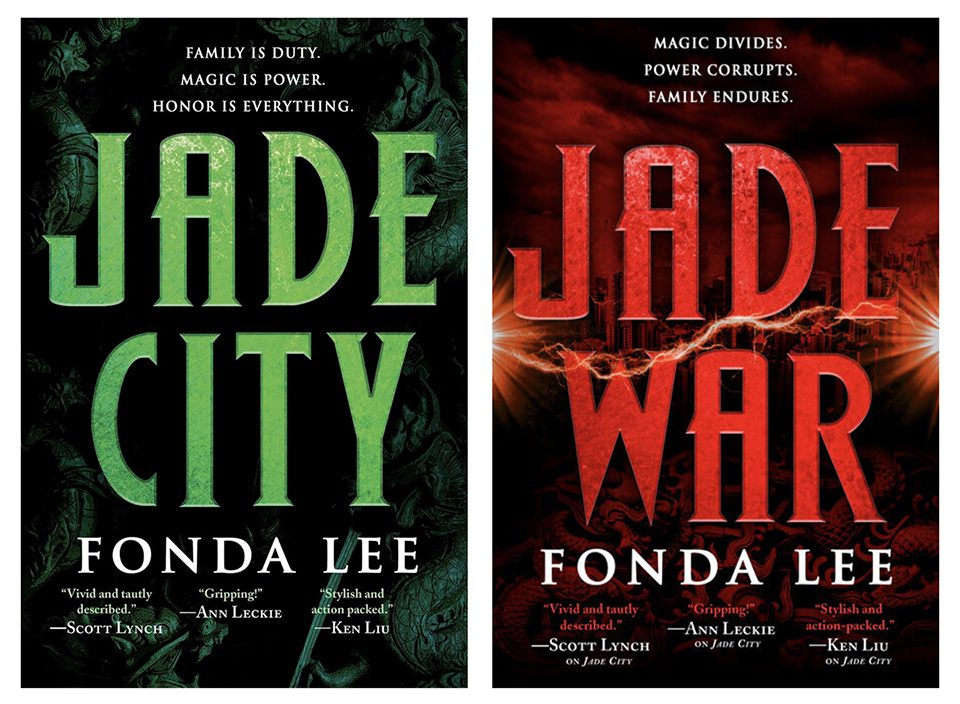
Synopsis
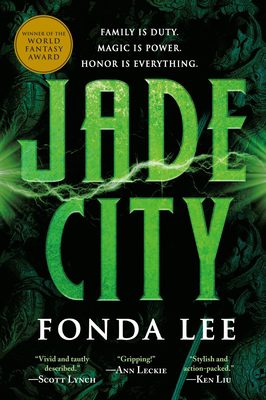
Jade is the lifeblood of the island of Kekon. It has been mined, traded, stolen, and killed for — and for centuries, honorable Green Bone warriors like the Kaul family have used it to enhance their magical abilities and defend the island from foreign invasion.
Now, the war is over and a new generation of Kauls vies for control of Kekon’s bustling capital city. They care about nothing but protecting their own, cornering the jade market, and defending the districts under their protection. Ancient tradition has little place in this rapidly changing nation.
When a powerful new drug emerges that lets anyone — even foreigners — wield jade, the simmering tension between the Kauls and the rival Ayt family erupts into open violence. The outcome of this clan war will determine the fate of all Green Bones — and of Kekon itself.
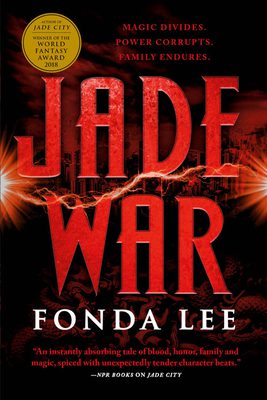
On the island of Kekon, the Kaul family is locked in a violent feud for control of the capital city and the supply of magical jade that endows trained Green Bone warriors with supernatural powers they alone have possessed for hundreds of years.
Beyond Kekon’s borders, war is brewing. Powerful foreign governments and mercenary criminal kingpins alike turn their eyes on the island nation. Jade, Kekon’s most prized resource, could make them rich – or give them the edge they’d need to topple their rivals.
Faced with threats on all sides, the Kaul family is forced to form new and dangerous alliances, confront enemies in the darkest streets and the tallest office towers, and put honor aside in order to do whatever it takes to ensure their own survival – and that of all the Green Bones of Kekon.
Review
Martial arts action and jade-fueled gangster warriors propel this Godfather-esque fantasy saga of family, politics, loyalty and drugs.
Let your imagination run wild for a moment. Picture the family drama and mafia politics of Mario Puzo’s The Godfather (as well as its film trilogy adaptations). Then, marry that with the aesthetics and slick martial arts action of Hong Kong cinema from the ‘80s and ‘90s. Now, add a dash of Quentin Tarantino levels of violence, the strict hierarchies and loyalty of Yakuza or Triad gangs, and deeply personal and believable character relationships. Also, for good measure (and most importantly), a magic system where bioenergetic jade infuses its users with enhanced senses and abilities. That is the basis for Fonda Lee’s stunning Green Bone Saga, a trilogy that spans Jade City, Jade War and the yet-to-be-released finale, Jade Legacy.
These books are so much more than that though. From the outset of Jade City, it’s clear that Lee doesn’t just wear her influences on her sleeve; she seeks to reclaim the narrative conventions of crime dramas produced in the last century, giving Asian-inspired characters and settings center stage in what has been an oversaturated and often whitewashed market for decades.
The Green Bone Saga is a mob epic, through and through, but it’s what Lee builds on top of it that gives Jade City and Jade War heart and soul. The story focuses on the adult children of the Kaul family of the No Peak clan as they vie for power against the rival Mountain clan. These are the two largest clans in the city of Janloon—quick aside, Janloon is the capital city of the fictional nation of Kekon, set in a secondary world that draws plenty of parallels to our own, and for historical context this world is equivalent to our 1980s, so planes, cars and guns exist—and the linchpin to each clan’s power lies in jade. Yes, jade, the ornamental stone. In the world of these novels however, jade is a rare, coveted bioenergetic mineral that can only be found on the island nation of Kekon, and so its people have grown up with jade more-or-less in their veins. Not only has the bioenergetic power of jade imbued the Kekonese with powers when worn, such as heightened senses, increased strength and speed, but it has also influenced their history, warrior culture, religion, national pride and more.
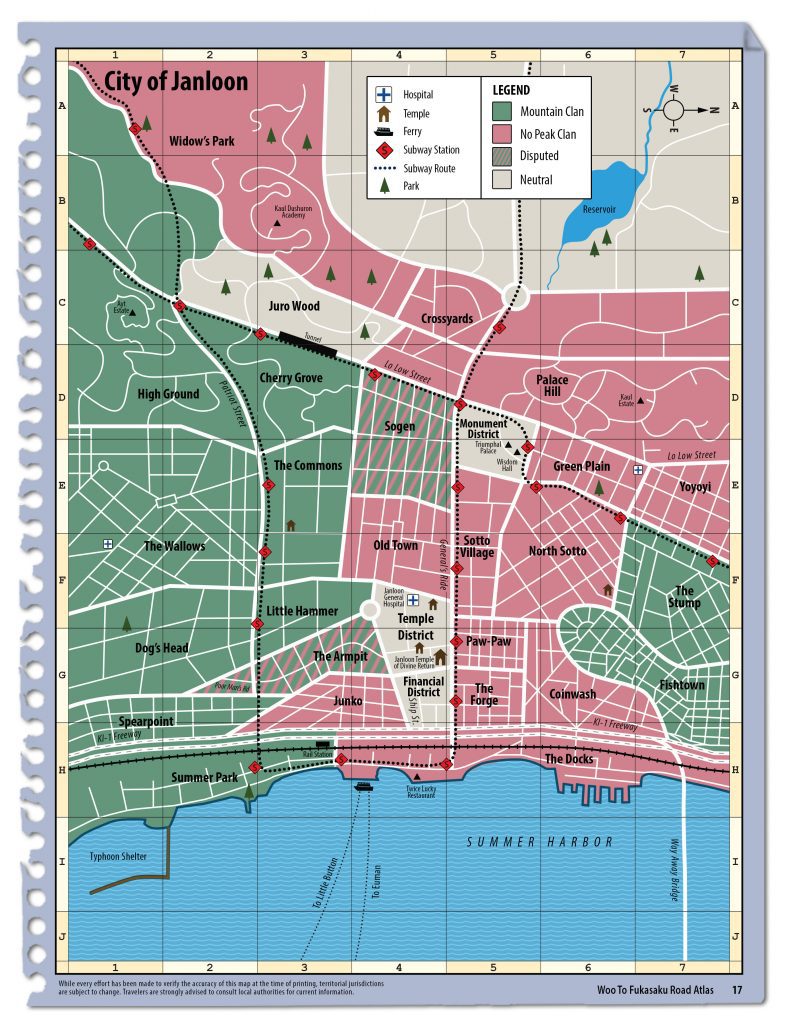
It is with jade in mind that the saga unfolds, but family is what holds it together. As war enters the equation, the heads of each clan (known as Pillars) coordinate among their lieutenants (the military-oriented Horns and business-oriented Weather Men) and subordinate Green Bone warriors to carry out gang warfare in the street, take over or reclaim territory, conduct business in boardrooms, collect patronage payments from businesses as a show of loyalty, and other means through which a clan retains power. What is much more interesting though, are the family dynamics within the No Peak clan and the Kauls. In Jade City the eldest son, Lan, must assume the mantle of Pillar from his physically diminishing grandfather. Beyond the weight of leading a clan he is not equipped to lead, Lan must also navigate the familial drama of his younger brother Hilo as a headstrong Horn, his cousin Anden as a Green Bone-in-training, and the return of his reluctant sister Shae from abroad.
This family interplay is the heart of this series. Throughout Jade City and Jade War, perspectives switch between Lan, Hilo, Anden and Shae, offering insights into each character’s mind, humanizing them and their decisions, showing the fallout of their many failures, and providing double meaning and context to situations that might seem unjustified to an opposing character. It is fascinating to see how this family bickers, unites and undercuts one another in such human ways. It is so intimate, and they feel like a real family, one that has been steeped in clan politics for generations. Too long, perhaps. Certain characters attempt to uphold the pride of the family, whereas others question or outright undermine that proud family history. A couple of side characters in each novel also provide an extension of the world beyond the Kaul family, offering a glimpse into the repercussions of the clan’s decisions. It’s a dynamic situation, one made all the more complicated by the pressures of outside forces.
That is where the Mountain clan comes in. Led by the vicious Ayt Mada, they are hell bent on stripping the No Peak clan of their influence and taking over the one thing that makes Kekon a true power on the global stage: jade. (It’s always jade!) The mineral is worn with pride in Kekon, displayed openly on bracelets, necklaces, earrings or studs placed in the skin, and it plays such a pivotal role in the series. Strangely though, it lacks the depth of explanation most magic systems receive, especially regarding the source of its power. In hindsight, I didn’t mind Lee’s decision here, but I constantly speculated about and imagined what made jade such a potent material. Hell, it results in some of the most jaw-dropping, tense fight scenes I’ve ever read; always a clear sense of movement, intention and weight, razor sharp talon knives cutting and swiping, swift kicks and punches landing with such impact. Add on top of that the sensory enhancement of jade, and goddamn—I was hooked. It makes sense, given Lee herself is a black belt martial artist, but the way she translated this to the page was invigorating.
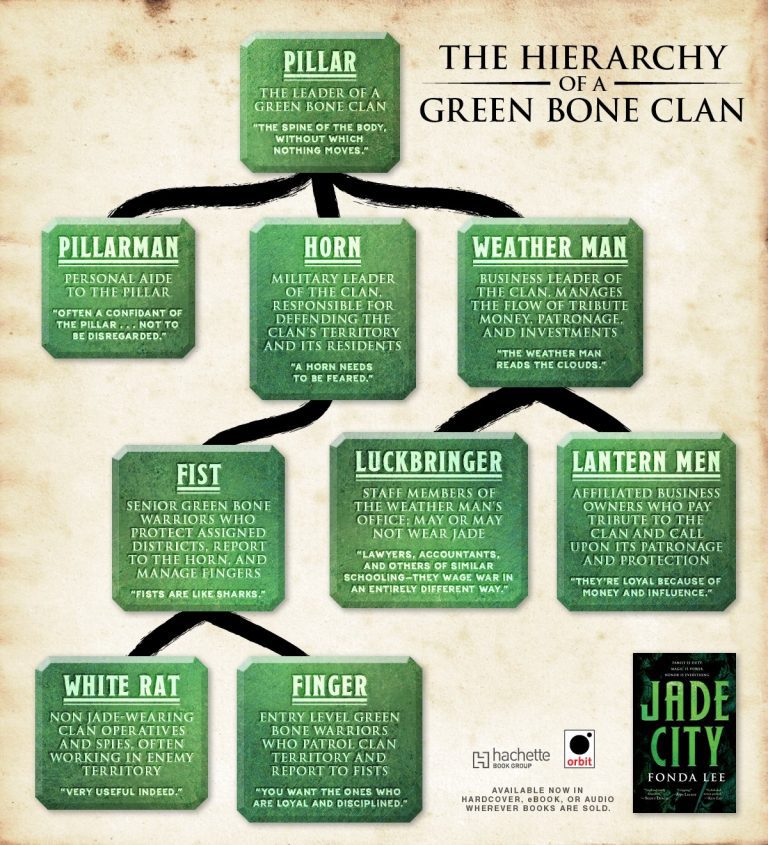
It’s not only the fight scenes that Lee has mastered either. She deftly handles dialogue and character interactions with tension and purpose, realistically integrating history, as well as building the world through natural descriptions and character perspectives. Her writing style is also relatively straightforward and clean, not flowery, allowing you to dig deep into the story while moving along at the perfect pace (these are fairly long books, with Jade City at 560 pages and Jade War at 590). And then there’s the gang warfare. The rivalry Mountain and No Peak clans feels so credible and brutal. Families that were once united in a past war have turned against one another through the burgeoning economy of Kekon and Janloon and the political and market forces that stem from that. Politicians can be bought, foreign powers can be bargained with, and all the players want a piece of the jade pie. But, controlling that pie are two clans whose views on how to handle the sale and distribution of jade are vastly different. It draws so many parallels to mineral profiteering in our own world (principally oil), and the issues and backstabbing that arise from all parties involved. For the Kekonese, on one hand is their history and a pride the Green Bone legacy. On the other is profit and progress. Who wins out in this case?
With this in mind, the Green Bone saga truly expands. Jade City is what its name suggests. It is a novel set in a city, Janloon, broadening briefly to other parts of the nation through a tight narrative that digs into the nitty gritty of this fucked up clan family and the raging storm around them—rival gangs, jade thieves, illegal drugs, shifty businesspeople and politicians. Then, Jade War opens up to other parts of the world, providing a scope that feels grander but no less personal. There are faraway nations waging war with the intention of creating jade-enhanced super-soldiers, gang strife and economic opportunities in foreign nations, jade smugglers who disrupt the Kekon’s monopoly. And at the center, the rivalry between Mountain and No Peak getting messier and messier. It’s fascinating. What’s most impressive is that Lee’s style and narrative choices successfully focus on creating believable people within a believable world. There are inspirations from Asian cultures that color Kekon and its people, but they are unique as a people in this world. Same goes for the countries and cultures beyond Kekon’s shores.
All the pieces of this jade puzzle worked so well for me. Jade City wowed me with its empathetic characters, engaging worldbuilding and tense action. Jade War amplified that in all the best ways with the addition of an international scope, political intrigue and a more integrated sense of where Kekon and its clans fit within the broader world. And, amidst all of this, the intimacy of the Kaul family bleeds through every page. Fonda Lee has crafted a masterful fantasy world with these two books, gifting me with some of my favorite fictional characters of all time. I cannot wait for the final installment, Jade Legacy, to arrive later this year.
This review was originally published on the Mind & Musings blog.









This is such a great review that digs into exactly why these are two of the best books I’ve literally ever read in my life. I thought the depth of Lee’s world was breathtaking, from its history to its political institutions to the culture of Janloon and the hierarchies of the clans. And yet it all unfurls naturally in front of your eyes as a result of the characters and the decision they make. The Green Bone Saga is nothing short of genius fiction to me, hands down some of the best fiction ever written.